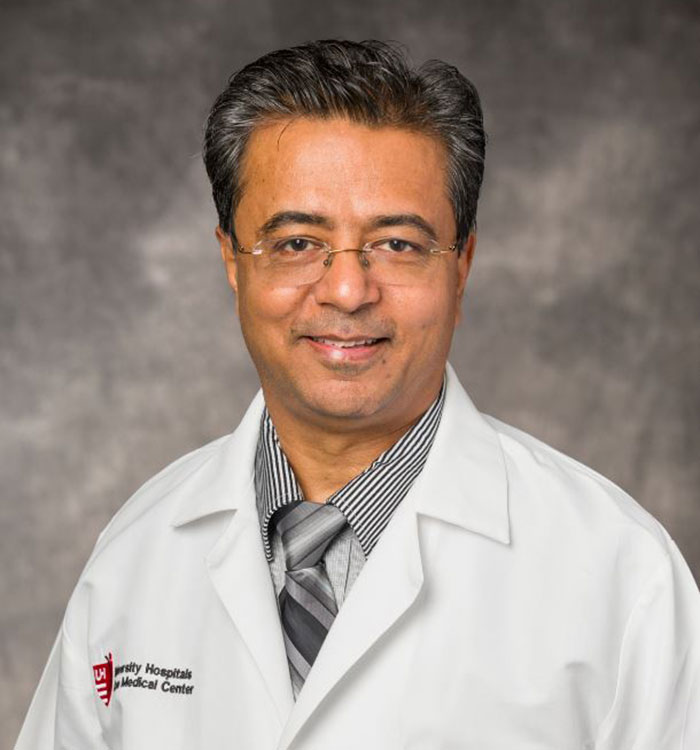UH Rainbow Opens Gene-Editing Trial for Sickle Cell Disease
February 14, 2023
UH Clinical Update | February 2023
After more than a year of diligent and painstaking preparation, the Pediatric Hematology-Oncology Clinical Trials Unit at UH Rainbow Babies & Children’s Hospital has successfully opened what is hoped to be a landmark gene-editing trial for treating patients with sickle cell disease.
 Jignesh Dalal, MD
Jignesh Dalal, MDThe first patient enrolled is set to receive his infusion of CRISPR-modified cells in the coming days. In addition, the research team here recently received word from the gene-editing company funding the trial that UH Rainbow can expand its study arm to include two more patients.
UH Rainbow is one of just 16 centers across the U.S. providing its sickle cell patients with access to this groundbreaking trial.
Science Behind the Trial
The sickle cell trial involves a single infusion of EDIT-301 – an experimental gene-edited cluster of differentiation cell therapy product derived from the patient’s own cells using gene-editing CRISPR technology. The goal is long-term activation of fetal hemoglobin, which all but disappears after birth but appears to lessen the symptoms of sickle cell disease, combined with the durable characteristics of allogeneic hematopoietic stem cell transplantation (HSCT). Although HSCT on its own is an approved curative treatment for sickle cell disease, with 90 percent or higher cure rates among pediatric patients, very few patients qualify.
“The clinical need is one thing that makes this trial so exciting,” says Jignesh Dalal, MD, a pediatric hematologist and oncologist at UH Rainbow who is co-leading the gene-editing trial here. “Bone marrow transplant is a curative treatment, but only 20 to 25 percent of sickle cell patients have a matched sibling who can donate the bone marrow. That means 80 percent of patients will not have that opportunity, not counting the number who might not have access to it for insurance and other reasons.”
Before receiving the EDIT-301 infusion, participants in the trial will undergo myeloablative conditioning with Busulfan to create a “clean slate” for the gene-edited cells to take hold. Because this poses the risk of infertility, the study sponsor is funding fertility preservation services and egg and sperm storage for study participants.
After the EDIT-301 infusion, the research team at UH Rainbow will track participants’ rates of severe vaso-occlusive events requiring medical attention for two years, looking to discern differences. The team will also measure levels of hemoglobin F, hemoglobin B, the need for sickle cell-related transfusions and hospitalizations, while also assessing the treatment’s safety profile.
Who is Eligible?
The Pediatric Hematology-Oncology Clinical Trials Unit at UH Rainbow is actively seeking more participants for this trial. Eligibility criteria include:
- Male and female subjects age 18 to 50
- Severe sickle cell disease, defined by documented diagnosis of a severe genotype, plus a history of at least two vaso-occlusive crises requiring medical attention in the past two years, despite supportive care
- Functional abilities rated 80 or higher on the Karnofsky Performance Scale
Potential Impact
Dr. Dalal says he’s encouraged about the difference a trial like this could potentially make for patients with sickle cell disease. These patients struggle with almost constant pain, potential organ damage, high medical bills and a lesser quality of life, so better options for their care like EDIT-301 are desperately needed. However, he says he thought this day might never come.
“When I was in training 20 years ago, I thought a development like this was in a fiction book and not something I was likely to see in my career or lifetime,” he says. “But this advancement is no longer a fiction. It is here, and we can do it.”
And as the leading provider of pediatric sickle cell care in Northeast Ohio, he says, UH Rainbow is uniquely positioned to contribute to this exciting science that has such great potential for our patients.
“We have a greatest number of sickle cell patients in Northeast Ohio,” he says. “This is the right trial, in the right place here at UH, with the right people leading it, for the right patients.”


